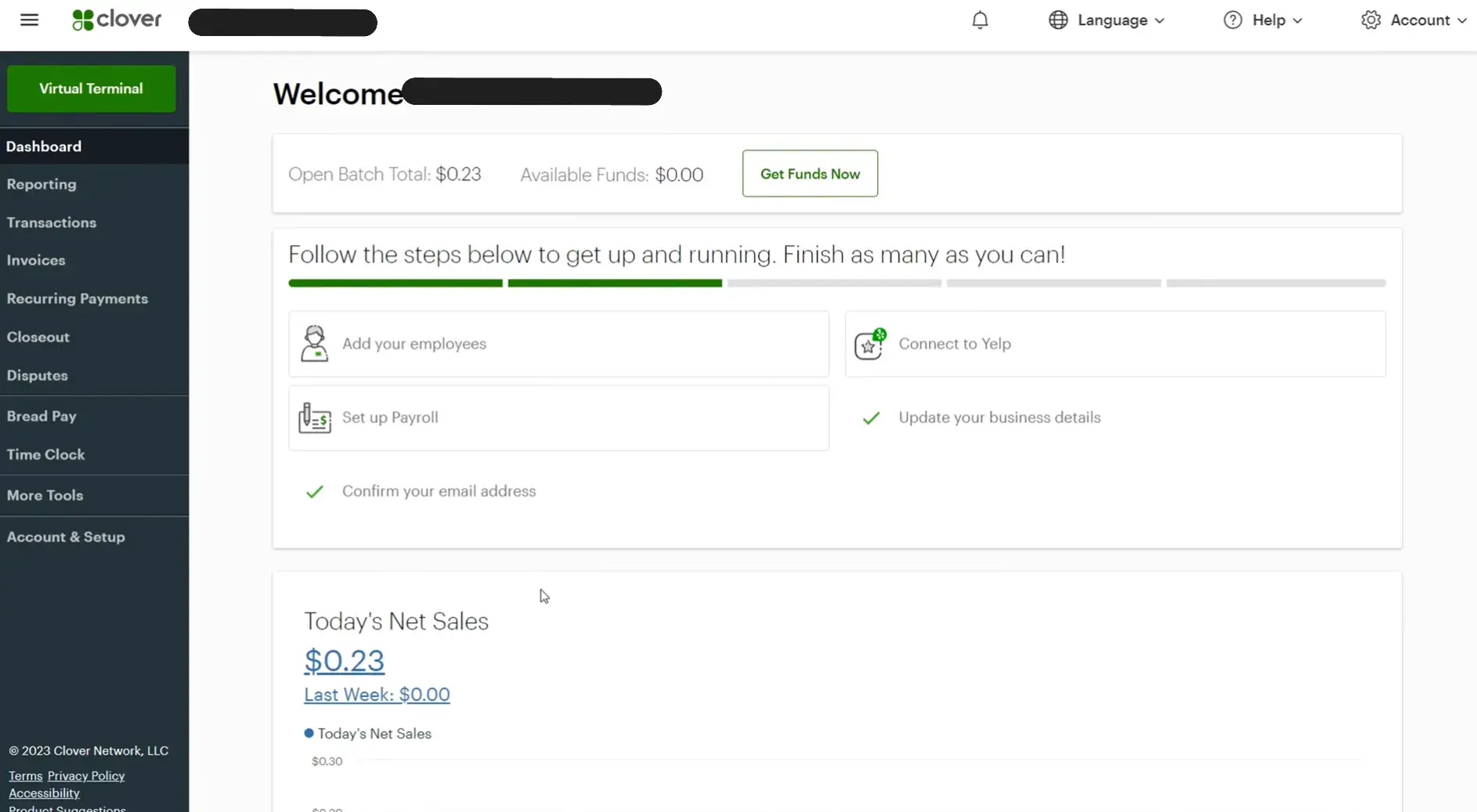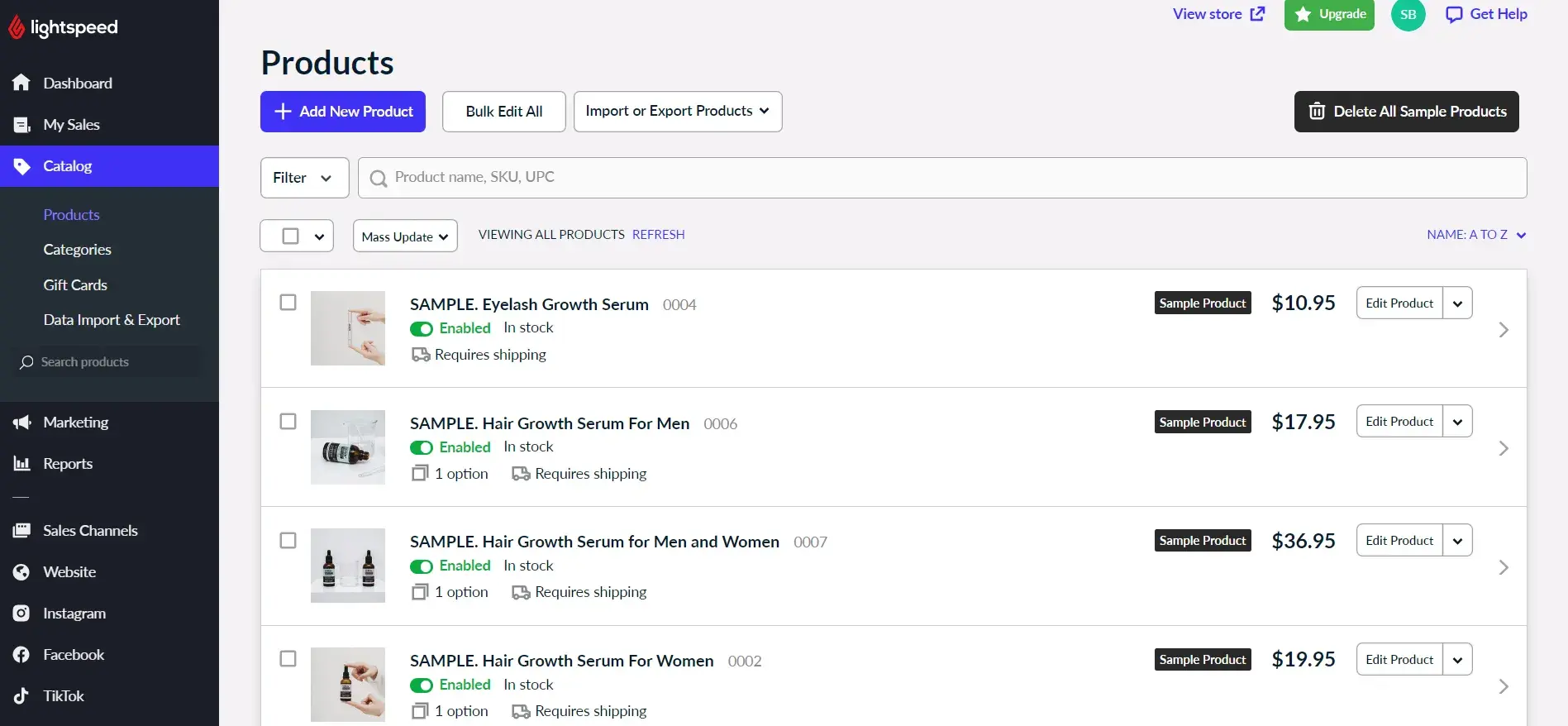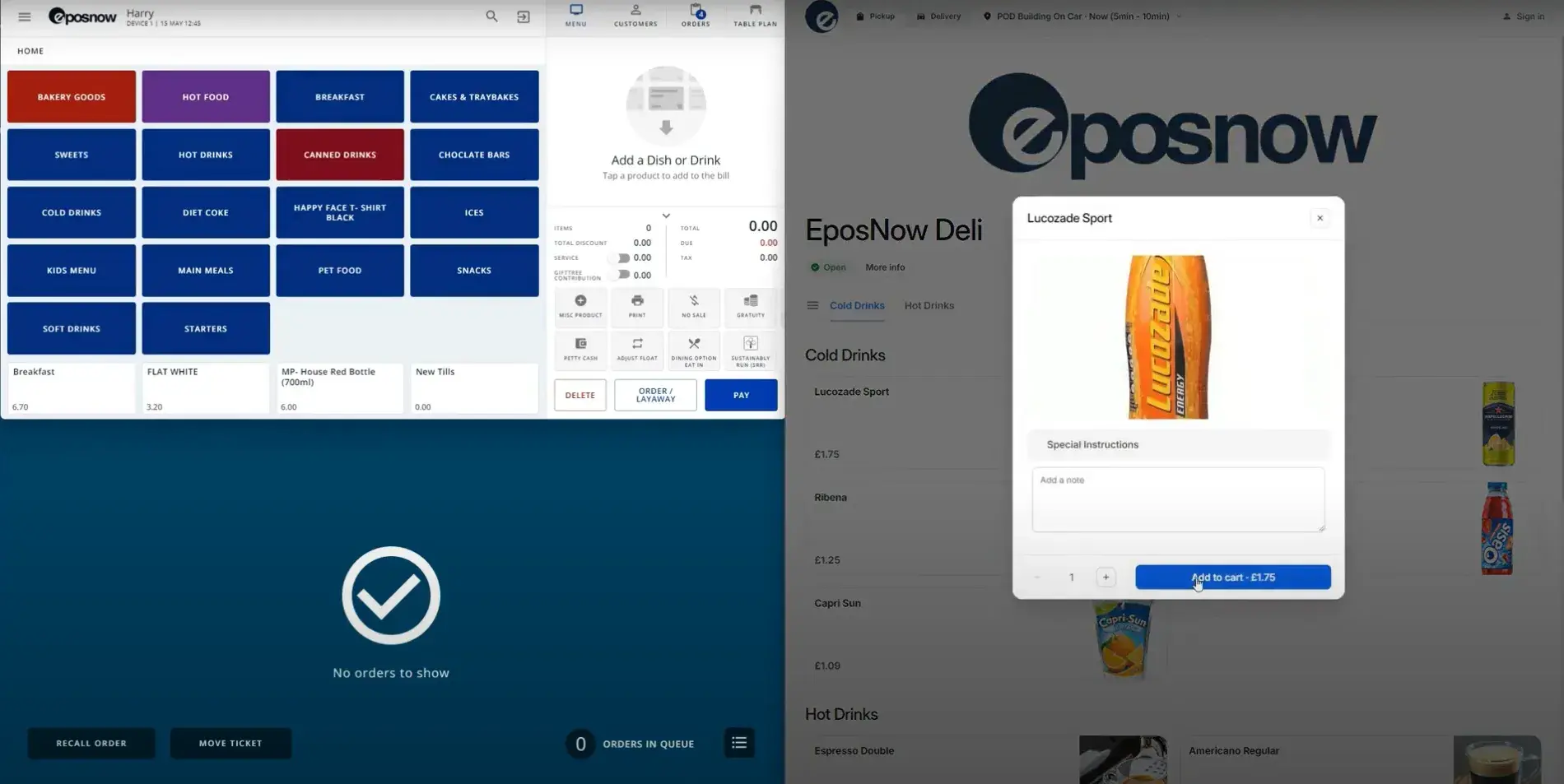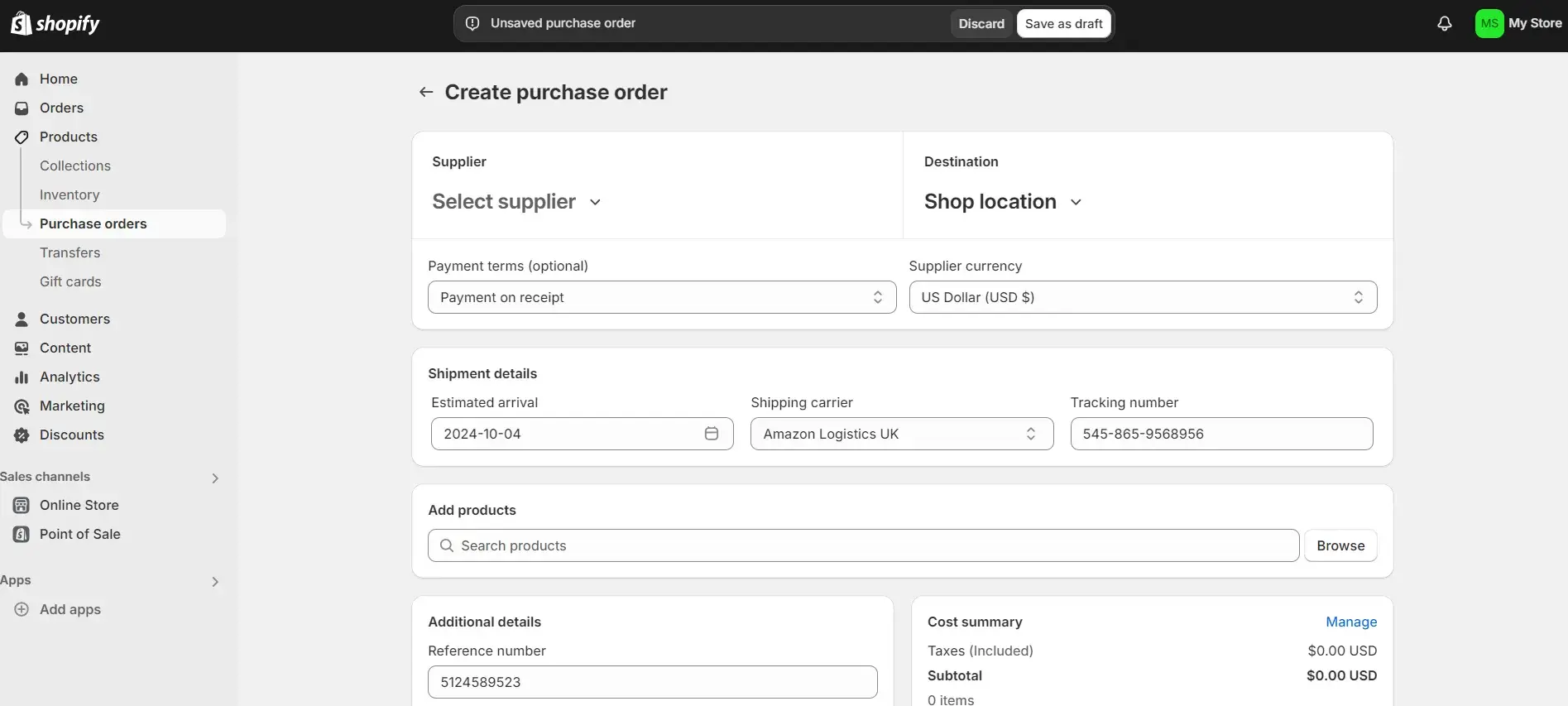In this post, I will take you through the types of POS reports and discuss how each one can be used for customer acquisition and retention.
Table of Contents
By the Numbers: The Current POS Market
The POS software market is already worth over $13 billion and is expected to have a compound annual growth rate of 10.8% from 2023 to 2030. Retail businesses are the prime users of POS software and account for more than 34% of overall revenue.
Of retailers, 51% say POS transaction data is the most valuable data source their businesses can have. They get this data through the right POS report — and the right underlying system — which can make all the difference in leveraging collected consumer data to drive customer conversion and retention.
What Is a POS Report?
A POS report is a collection of data pulled directly from your point of sale system that breaks down specific aspects of your business activity, like credit card sales. This data helps you make informed business decisions so you can continue to satisfy your customers.
Each system defines its reports differently, but most center around key areas like sales and profits, inventory and stock handling, employee management, and details about your customers and their behavior.
|
POS Report |
purpose |
example included metrics |
|
Sales Summary Report |
These reports outline your business’s overall sales. |
Gross profits and profit margins, average transaction value, or sales by specific category. |
|
Products-sold Report |
These reports outline what you’ve sold during a set period. |
Lists of best-selling and worst-selling products, trending items, revenue per product. |
|
Purchase History Report (also called customer report) |
These reports give insight into your customers and their level of loyalty to your business. |
Overall customer spend, loyalty program insights, customer lifetime value. |
|
Employee Tracking Report |
These reports outline employee performance and activities. |
Commissions per employee, tip pools, staff productivity levels. |
|
Inventory Optimization Report |
These reports help you monitor incoming and outgoing products. |
Total inventory counts, stock-to-sales comparisons, low stock notices. |
|
Stock Levels Report |
These reports help you avoid overstocking or running out of key products. |
Value of in-stock inventory, low inventory totals, underperforming products. |
How Do POS Reports Work?
POS reports are powerful tools that transform raw data from your point of sale system into actionable insights. Let me take you through how these reports function.
1. Data Collection
Whenever a purchase is made at a physical store or online platform, the POS system automatically logs the details of the transaction. This data includes the products bought along with their quantities, prices, any discounts availed, the payment method used, and the exact date and time of the purchase.
If you have integrated your store with a CRM, then the POS system will also collect your customer data, such as contact information and purchase history.
Additionally, POS systems can also record which employee processed the transaction along with any changes or cancellations made.
2. Data Storage
The system stores all this data in one central database location. The data is then sorted into categories such as sales, inventory, customer details, and employee information to make it easier for retrieval and analysis.
3. Report Generation
POS systems offer a range of pre-built report templates tailored to business requirements. Some systems also enable you to generate custom reports by choosing specific data points and setting certain parameters.
4. Data Analysis and Delivery
The system compiles data from all the transactions during the specified timeframe. It then carries out essential computations like summing up sales figures and averaging transaction amounts while also analyzing profit margins. Some systems can also predict trends or irregularities using advanced algorithms.
How to Use Point-of-Sale Reports
Now that you have understood how a POS report works, let's explore how you can use it to grow your business. When used correctly, a POS report can be a north star that guides you in every business decision you make.
In this section, I'll show you how to make the most of a POS report.
1. Set Key Performance Indicators (KPIs).
Data is of no use if you can't analyze it and get actionable insights from it. To effectively analyze data you need to first identify the key metrics that define your business's success.
These metrics can be anything from sales per square foot and average transaction value to customer retention rate.
For example, when I was running my handmade camel milk soap business, metrics like average transaction value were very important to my business. As I was selling an artisanal product, I needed to know how much customers were willing to spend. This data helped me make better decisions regarding my pricing, bundle offers, and upselling techniques.
2. Use sales reports for strategic planning.
As I explained before, once you have identified your key metrics, you can use a POS report to gain more insights from them.
For example, you can use the report to identify peak sales periods, which can further help you in making staffing and inventory decisions.
As your business grows, so does the data collected. The more the data, the better insights and trends you can identify. Using these insights, you can make suitable strategic plans for your business.
3. Use customer data for personalization.
With every transaction you make, your POS system will be collecting valuable customer data that you can leverage. You can start by segmenting your customers based on their purchasing behavior and launch targeted marketing campaigns for each segment.
For example, suppose you identify a set of customers who always purchase during the holiday season. In that case, you can customize special bundles for this customer segment and nudge them to buy more.
4. Improve employee performance.
While POS reports are a great source of information about your customers, they also store a lot of details about your employees.
You can track their individual sales performance and identify if they need additional training. Further, you can provide performance-based incentives using POS data to keep your team motivated to do more.
5. Refine pricing strategies.
If your pricing strategies aren't done right, it could have an adverse effect on your sales. So, it becomes very important to constantly analyze your sales reports, understand your profit margin, and make informed decisions.
Using POS reports, you can analyze how promotions and discounts affect your revenue and make sure your sales plans are working well. You can also use dynamic pricing models based on the demand patterns your POS report shows to increase profits during peak times.
Here is a very interesting insight that Stephen Boatman, principal at Flat Fee Financial, shared while discussing how he has helped his clients use POS reports to fuel growth in unexpected ways.
He shared, “One of my clients, a small retail chain, compared their POS data to larger economic indicators such as local unemployment rates and housing trends. When they noted a drop in local employment, they determined which low-cost items sold consistently during economic downturns. They used this insight to offer promotions on these items, drawing in cost-conscious customers without slashing margins on higher-end products.”
See, the possibilities are limitless when it comes to leveraging your POS reports for your business. You have the data. You have the insights. It's up to you how to use them to boost your business growth.
Now, let's dive deeper into the different types of POS system reports.
6 Common Types of POS System Reports
- Sales Summary Report
- Product-sold Report
- Purchase History Report
- Employee Tracking Report
- Inventory Optimization Report
- Stock Levels Report
The large volume of data collected by POS systems means you can run reports on just about anything — but reports alone aren’t enough to provide insight.
Here's a look at six types of POS system reports that I have personally found very helpful. Let me explain what they are, how they can potentially benefit your business, and the important metrics they include.
1. Sales Summary Report
A POS sales summary report is a comprehensive overview of your business's financial performance. The report outlines factors like gross profits, average transaction value, or the products you make the most profit from.
Sales POS Report Metrics
Common sales POS metrics are:
- Sales totals during a specific period, like a daily sales breakdown.
- Gross profits and profit margins.
- Sales by specific category, like takeout vs. delivery sales or type of item sold.
- Average transaction value.
- Sales per payment method (cash, credit, gift card, etc.).
- Most popular payment method.
- Voided sales, discounts, returns.
How these POS reports can improve your business decisions:
- Identify peak sales seasons to improve staffing and inventory management.
- Review the profit margins of products to prioritize top-selling items.
- Use payment data to negotiate better deals with payment processors or bargain better incentives for customers.
- Monitor discounts and refunds to plan out your pricing and refund strategies.
2. Products-Sold Report
A products-sold report is a detailed breakdown of individual product performance, including bestsellers, underperforming items, and sales trends over time.
Every business needs to know what’s been sold every day.
For example, if I know my customers buy more of my products around the holidays, then I can stock up a few months beforehand so I can meet seasonal demand. With an advanced point-of-sale system, I can easily identify these products and set reminders to restock my shelves before it's too late.
Even if you‘re a SaaS business, you should still pay attention to product-sold reports. Although you don’t typically have an inventory to worry about, you should be interested when your customers purchase upgrades or buy additional products. This will give you a better idea of the customer's journey, so you know when the best times are to upsell and cross-sell.
Products Sold POS Report Metrics
Product-sold POS metrics to track are:
- Best-selling products.
- Worst selling products.
- Trending items.
- Total value of products sold.
- Most returned products.
- Revenue per product.
How these POS reports help you make better business decisions:
- Identify complementary products to explore cross-selling and bundling possibilities.
- Improve your product selection by removing items that consistently have low-performance levels.
- Be prepared for demand fluctuations so that you can adapt your inventory and marketing plans accordingly.
- Identify trends at an early stage to take advantage of evolving consumer demands.
3. Purchase History Report
A purchase history report (also called a customer report) is a compilation of individual customer data, including spending habits, frequency of visits, and preferred products.
In my experience, these reports are very useful in understanding your repeat customers and their spending habits. You’ll learn about their preferences to better serve them whenever they come around. If a repeat customer suddenly stops interacting with your company, your marketing or customer service team can re-engage them before they churn.
This is how Shawn Plummer, CEO of The Annuity Expert, said they boosted their customer retention using a purchase history report:
"One specific change we made was timing our outreach based on historical activity. For example, we discovered that clients used particular services more frequently during tax season and year-end planning,” Plummer says.
Using that data, Plummer’s team implemented targeted campaigns during those periods, offering annuity reviews and tailored financial products.
“This resulted in a 20% improvement in client retention and a significant influx of new business,” Plummer notes.
Additionally, a CRM can help you create purchase history reports and compile data like customer names, addresses, phone numbers, and even satisfaction scores. The image below is a customer profile with an overview of a customer's interaction history with a sales rep.

Some businesses have more use for a POS system than a CRM.
Purchase History POS Report Metrics
Important purchase history POS report metrics to track are:
- The products repeat customers purchase most often.
- Overall customer spend totals.
- Reservation insights or reservation summaries, like the average amount spent per visit.
- Loyalty program insights, like reward point balances.
- Purchase and return history per customer.
How these POS reports help you make better business decisions:
- Create marketing campaigns tailored to various customer segments and preferences.
- Create a loyalty program to incentivize your most valuable customers with exclusive rewards and benefits.
- Pinpoint customers who may be at risk (those showing decreased engagement levels) and tailor retention strategies to suit their needs.
- Use purchase patterns to create personalized product recommendations and increase average order value.
4. Employee Tracking Report
Employee tracking reports offer detailed analysis of employee performance, including their sales metrics, productivity levels, and customer satisfaction scores.
I believe that employees have the potential to either make or break a business. They deliver your products and services and create delightful experiences for your customers. So, having a check on them is crucial.
An employee tracking report helps you identify your top performers and those who might need to catch up.

Sergey Taver, marketing manager at Precision Watches, states that they were able to boost store productivity using employee tracking POS reports.
He said, “By correlating sales data to specific employee shifts, we were able to determine which team members typically drove higher sales. This knowledge enabled us to alter staffing to guarantee that our top achievers worked during peak hours, increasing store productivity by 8%.”
Employee Tracking POS Report Metrics
Employee tracking POS report metrics include:
- Commission rates.
- Tip pool totals and tips per employee.
- Sales per employee.
- Staff productivity.
- Compare staffing levels to products sold to ensure you have enough employees to always meet demand.
- Scheduling, attendance, and shift reports.
How these POS reports help you make better business decisions:
- Introduce performance-based rewards to encourage and retain top performers.
- Identify areas for growth and development among employees who may not be meeting performance expectations.
- Assign tasks or responsibilities to employees based on their strengths and skills.
Planning to upskill your employees with the right training? Use HubSpot's free business training plan template to develop customized training plans tailored to your company's needs.
5. Inventory Optimization Report
Inventory optimization report is a comprehensive view of your inventory status, including stock levels, turnover rates, and reorder points.
A statistic about inventory management that shocked me was that 43% of small businesses don‘t track their inventory. These businesses don’t have a way to monitor incoming and outgoing products, so a lot can go wrong without their teams knowing.
Inventory reports are up-to-date reports about your stock levels, which makes all the difference in ensuring you always have the products customers are looking for. These reports can even help you work with an unhappy customer seeking an exchange for a broken or unused item.
Inventory Optimization POS Reports
Inventory optimization POS metrics are:
- Total inventory counts.
- Stock-to-sales comparison.
- Automated reorder notifications.
- Stock transfers.
- Days or times you most often sell out of items.
- Expected vs. actual inventory.
How these POS reports help you make better business decisions:
- Use just-in-time inventory management to cut down on storage expenses and decrease material usage.
- Identify items in stock that are not selling quickly for clearance sales or package deals.
- Set up automated alerts for reordering to avoid running out of stock of in-demand products.
- Use past inventory records to forecast demand and improve procurement decisions.
6. Stock Levels Report
Stock levels reports offer a real-time view of your current inventory, including low stock alerts and overstock warnings. You’ll learn what items to order more of or what items are underperforming so you can seek opportunities to offer new or better-selling items to introduce to your customers.
Stock Levels POS Report Metrics
Common stock levels POS Metrics are:
- The total value of your current in-stock inventory.
- Deadstock or underperforming products.
- Low inventory totals.
- Reorder points or notifications.
How these POS reports help you make better business decisions:
- Implement flexible pricing tactics to manage stock levels effectively (e.g., offering discounts for overstocked items or increasing prices on low-stock, high-demand products).
- Identify opportunities to shift products between stores to balance inventory across multiple locations.
- Use alerts to trigger marketing campaigns for overstocked items.
With these key reports in mind, how do you actually get them? A POS system.
POS Reporting Systems
- Clover
- Lightspeed
- Square
- Epos Now
- Toast
- Shopify POS
There are a host of POS systems available, and below, I’ve compiled a list of six high-quality options to consider.
Each system mentioned includes the important reports for sales, product, inventory and stock, and employee management, and I’ll explicitly call out the key customer reports offered so you can make sure to leverage your data to retain customers and keep them satisfied.
1. Clover
Best for: Food service (table and counter), retail, professional or personal services, ecommerce, home and field businesses.
Clover is a popular POS, offering various hardware and software options. What I love about Clover is that you can easily create customizable reports in your dashboard for data like sales trends, daily revenue, employee shift reports, and inventory tracking, so you always have enough stock.

In a conversation I had with Nora Sudduth, founder of Nora Sudduth Consulting, she mentioned, “I've worked with businesses in various industries to optimize their operations through POS systems, and Clover has been a standout for several of my clients, particularly in retail and hospitality.”
She further added, “Clover's Employee Tracking Reports have been a game-changer. A restaurant client was able to track staff productivity, peak hours, and even change shift plans using real-time data. This discovery resulted in a 25% increase in service efficiency, reduced staff burnout, and higher customer satisfaction.”
Customer Reporting Features
- Automatically generate customer profiles within your POS after each credit card sale.
- Track customer history and behavior to uncover preferred products and order history.
- Offer an opt-in communication system to get permission to reach out to your most loyal customers.
- Collect customer feedback to see how people are feeling after every interaction.
Pricing
- Software: Varies by industry; starter plans range from $0/mo – $49.95/mo. Contact sales for custom pricing.
- Hardware: One hardware system is included in most plans; additional cost for more units.
2. Lightspeed
Best for: Retail businesses and inventory management.
Lightspeed’s POS is a centralized tool for creating POS reports that drive informed decisions. I really liked how you can track all your sales, overall revenue, and profits using their standard reporting feature.
As you can see below, you can easily create your product catalog, monitor stock levels and place product orders, track commissions, and view tip pools after every shift.

The other feature that I found really useful was their inventory management features. It lets you set minimum and maximum inventory levels and provides seasonal inventory control.
Customer Reporting Features
- Compile customer purchase history and behavior in unique guest profiles that automatically update after every interaction.
- Add custom tracking filters to customer profiles for deeper insight, like repeat purchases or time spent in-store.
- Visualize each customer's average customer lifetime value.
- On-the-floor employees are notified at the POS when a repeat customer is checking out to further personalize their experience.
Pricing
- Software: Varies by business type and need, starter plans range from $0/mo – $89/mo. Contact sales for pricing.
- Hardware: Hardware sold separately; contact sales for pricing.
3. Square
Best for: Businesses of all sizes and types (restaurant, retail, professional, pop-ups, seasonal, etc.).
Square POS software and hardware make it easy to take point-of-sale payments and generate detailed reports for sales by specific products, team member sales, and inventory management. In my opinion, this tool is a valuable option for smaller businesses, given its lower cost.

While I was discussing Square's product features with Jeffrey Zhou, CEO of Fig Loans, he mentioned, "Square's Purchase History Reports is a key feature for us. Even though we do not sell actual goods, we used this data to monitor client payment and transaction behavior throughout our financial literacy workshops.”
Zhou says this helped the team track how frequently clients returned to the business’ services and used our payment plans.
“This data allowed us to identify trends and tailor our loan products more closely to what clients needed,” Zhou notes.
Customer Reporting Features
- Automated customer profiles contain stats like average spend and unique behavior.
- New vs. returning customer graphs give a breakdown of each group to better understand the impact of loyalty.
- Customers can opt-in to provide feedback on their experience.
- Use the notes feature to record important customer information so you can always offer a unique and personalized experience.
Pricing
- Software: Free Square POS; free–$165/mo per countertop Restaurant POS; free–$89/mo per countertop Retail POS. Custom pricing is also available.
- Hardware: $49–$799, varies by functionality.
4. Epos Now
Best for: Hospitality and retail.
Epos Now is an all-in-one POS solution with the hardware and software you’ll need to get your point-of-sale system up and running. In my opinion, their interface is one of the best in the lot, making navigation super simple and easy.

You can also easily access real-time data and reports about your business processes and set up stock alters to manage inventory, generate staffing hours reports, and sales and profit trends.
Customer Reporting Features
- Customer profiles are generated after every purchase that outline who customers are, what they buy, and how much they spend.
- Create custom filters to visualize activity by customer type so you can solve for every kind of customer.
- Set up loyalty schemes for returning customers for returning customers and track sign-ups and credits.
Pricing: Discounts and bundling options regularly available. Contact sales for pricing.
5. Toast
Best for: Restaurants and other food service businesses.
Toast POS offers business insights like product mix views to track menu and store inventory, overviews of sales trends, employee performance, and comparative reporting. With mobile-optimized reports, you can access information from wherever you are, whenever you need.

If you run a restaurant business, then I highly recommend giving this tool a try. Along with POS, it also offers features to manage payroll, marketing, and invoices/inventory.
Customer Reporting Features
- Collect customer information via digital receipts.
- Guest engagement reports track visits, timing of visits, and sales totals per visit.
- The guestbook report outlines your biggest spenders, most loyal customers, and lifetime spend for all visitors.
- View summaries of reward accounts, gift card usage, guest credits/loyalty point totals.
Pricing
- Software: $0/month Quick start bundle; $69/mo Core. Custom plans and bundles also available.
- Hardware: Quick start bundle includes one terminal or handheld kit; choose your hardware system for all other plans.
6. Shopify POS
Best for: Ecommerce, in-store, or omnichannel businesses of all types.
If you are an ecommerce brand, then the Shopify POS system would be my top recommendation. However, this tool is not just limited to ecommerce.

With the Shopify POS system, you can easily analyze product reports, view automated inventory count updates and cash flow reports, and attribute individual sales to staff.
Adam Tishman, co-founder at Helix Sleep, states, “Shopify's real-time inventory tracking is exceptional, helping us instantly adapt to changing demand. It gives us the flexibility to manage stock efficiently and optimize product availability.”
Customer Reporting Features
- Every order automatically generates a customer profile containing contact information, order history, and shopping habits.
- Customer behavior predictions like predicted spending tiers and expected purchase value, and insight into average order count and first-time vs. returning customer sales.
- Add tags to customer profiles based on unique characteristics of guest behavior and insights into each cohort.
- Give customers the option to opt in and provide emails and phone numbers for tailored communications.
Pricing
- Software: 3-day free trial. In-person POS: Starter - $5/mo, Retail - $89/mo.
- Hardware: Varies by system, capability, and accessories.
Growing Your Customer Base With POS Reports
As a business owner myself, I understand that growing a business requires in-depth insight into all your operations. POS reports can be your one-stop solution.
With POS reports, you get a better idea of how your business is performing and what it needs to do even better over time. Using the data from these reports, you can learn about your customer's buying habits, form effective marketing strategies, and tailor your customer experience to appeal to the needs of your target audience and grow your customer base.
Editor's note: This post was originally published in January 2021 and has been updated for comprehensiveness.
Customer Acquisition
.png?width=112&height=112&name=Image%20Hackathon%20%E2%80%93%20Vertical%20(9).png)

.png)

![7 Customer Acquisition Challenges You Might Face This Year [New Data]](https://53.fs1.hubspotusercontent-na1.net/hubfs/53/customer%20acquisition%20%20(1).webp)







